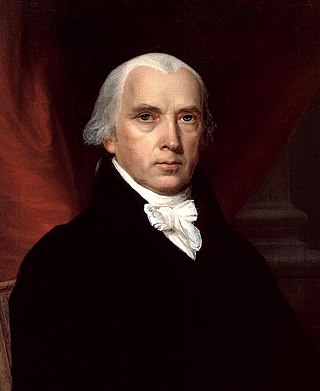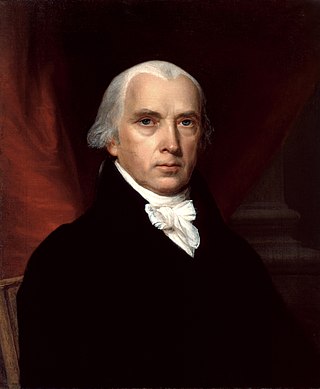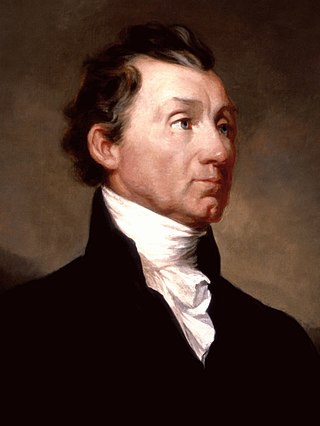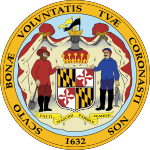
Presidential elections were first held in the United States from December 15, 1788 to January 7, 1789, under the new Constitution ratified in 1788. George Washington was unanimously elected for the first of his two terms as president and John Adams became the first vice president. This was the only U.S. presidential election that spanned two calendar years without a contingent election and the first national presidential election in American history.

Presidential elections were held in the United States from November 2 to December 5, 1792. Incumbent President George Washington was elected to a second term by a unanimous vote in the electoral college, while John Adams was reelected as vice president. Washington was essentially unopposed, but Adams faced a competitive re-election against Governor George Clinton of New York.

Presidential elections were held in the United States from November 4 to December 7, 1796, when electors throughout the United States cast their ballots. It was the first contested American presidential election, the first presidential election in which political parties played a dominant role, and the only presidential election in which a president and vice president were elected from opposing tickets. Incumbent vice president John Adams of the Federalist Party defeated former secretary of state Thomas Jefferson of the Democratic-Republican Party.

Presidential elections were held in the United States from October 31 to December 3, 1800. In what is sometimes called the "Revolution of 1800", the Democratic-Republican Party candidate, Vice President Thomas Jefferson, defeated the Federalist Party candidate and incumbent, President John Adams. The election was a political realignment that ushered in a generation of Democratic-Republican leadership. This was the first presidential election in American history to be a rematch. It was also the first election in American history where an incumbent president did not win re-election.

The 1804 United States presidential election was the fifth quadrennial presidential election, taking place from November 2 to December 5, 1804. Incumbent Democratic-Republican president Thomas Jefferson defeated Federalist Charles Cotesworth Pinckney of South Carolina. It was the first presidential election conducted following the ratification of the Twelfth Amendment to the United States Constitution, which reformed procedures for electing presidents and vice presidents.

Presidential elections were held in the United States from November 4 to December 7, 1808. The Democratic-Republican candidate James Madison defeated Federalist candidate Charles Cotesworth Pinckney decisively.

Presidential elections were held in the United States from October 30 to December 2, 1812. In the shadow of the War of 1812, incumbent Democratic-Republican President James Madison defeated DeWitt Clinton, the lieutenant governor of New York and mayor of New York City, who drew support from dissident Democratic-Republicans in the North as well as Federalists. It was the first presidential election to be held during a major war involving the United States.

Presidential elections were held in the United States from November 1 to December 4, 1816. In the first election following the end of the War of 1812, Democratic-Republican candidate James Monroe defeated Federalist Rufus King. The election was the last in which the Federalist Party fielded a presidential candidate.

Presidential elections were held in the United States from November 1 to December 6, 1820. Taking place at the height of the Era of Good Feelings, the election saw incumbent Democratic-Republican President James Monroe win reelection without a major opponent. It was the third and the most recent United States presidential election in which a presidential candidate ran effectively unopposed. James Monroe's re-election marked the first time in U.S. history that a third consecutive president won a second election.

Presidential elections were held in the United States from October 26 to December 2, 1824. Andrew Jackson, John Quincy Adams, Henry Clay and William Crawford were the primary contenders for the presidency. The result of the election was inconclusive, as no candidate won a majority of the electoral vote. In the election for vice president, John C. Calhoun was elected with a comfortable majority of the vote. Because none of the candidates for president garnered an electoral vote majority, the U.S. House of Representatives, under the provisions of the Twelfth Amendment, held a contingent election. On February 9, 1825, the House voted to elect John Quincy Adams as president, ultimately giving the election to him.

Richard Nixon served as the 37th president of the United States from 1969 to 1974. He previously served as the 36th vice president of the United States from 1953 to 1961, and as a United States senator from 1950 to 1953 and United States representative from 1947 to 1950.

The 2000 United States presidential election in Maryland took place on November 7, 2000. Maryland participated in the 2000 United States presidential election along with the 49 other U.S. states and Washington, D.C. Voters chose 10 representatives, or electors, to the Electoral College, who voted for President and Vice President.

The 1956 United States presidential election in Pennsylvania took place on November 6, 1956 as part of the 1956 United States presidential election. Voters chose 32 representatives, or electors to the Electoral College, who voted for president and vice president.

The 1956 United States presidential election in New York took place on November 6, 1956. All contemporary 48 states were part of the 1956 United States presidential election. Voters chose 45 electors to the Electoral College, which selected the president and vice president.

The 1956 United States presidential election in Ohio took place on November 6, 1956, throughout all 48 states, which was part of the 1956 United States presidential election. Voters chose 25 representatives, or electors to the Electoral College, who voted for President and Vice President.

The 1788–89 United States presidential election in Maryland took place on January 7, 1789, as part of the 1788–1789 United States presidential election to elect the first President. Voters chose eight representatives, or electors to the Electoral College, who voted for President and Vice President. However, 2 electors would not vote.

The 1820 United States presidential election in Maryland took place on an unknown date in 1820, as part of the 1820 presidential election. Voters chose eleven representatives, or electors to the Electoral College, who voted for President and Vice President.





















